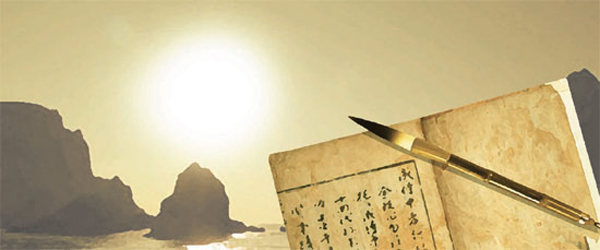For history to live, sites must inspire

Last weekend, I participated in the Silhak Tour 2013, hosted by the Dasan Institute and the Silhak Museum, and travelled in Gyeonggi and South and North Jeolla provinces to follow in their footsteps. We visited the graves of Dasan and Seongho in Namyangju and Ansan, respectively, and stopped by at the Bangye School in Buan. We also went to Heuksan Island, where Sonam was sent into exile, and then to Gangjin, where Dasan lived in exile. Another part of the excursion was a visit to Yun Seon-do’s home, Nokudang, in Haenam, a residence that was also the home of the family of Dasan’s mother.
As I traced the lives of the Silhak scholars, they felt much more alive to me. The gap of several centuries in time was narrowed as I imagined them walking the very ground we stood on. I almost felt as if they were familiar senior members of our generation. I could not help being seized with a desire to learn more about their lives, their ideas and their writings. That, perhaps, is the essence of a successful and productive field trip.
The insights I gained and the emotional connections I felt on this kind of field trip colluded with the spirit of Silhak to overcome the more common empty studies of theoretical justifications and ideals. This trip pushed me to try to do more relevant and substantial research to help improve people’s daily lives as the Silhak scholars did.
But in addition to being imbued with such lofty sentiments, I was also disappointed by some of the reality of the things I saw on this trip. Bangye School, where Yu Hyeong-won wrote the Silhak classic Bangye Collection, had not been maintained properly. Although the structure had been renovated, the floor was littered with animal droppings. The water in the well, from which Bangye must have drank, was spoiled and almost looked like a green tea latte. Sonam’s house in exile appeared to be a straw-roofed house from a distance, but as we approached, we realized that the structure’s cement roof had been painted yellow. When we got close to the house, we were dispirited. Dasan Institute Director Park Seok-mu, who led the tour, clucked his tongue and said, “This is horrible.”
On Aug. 27, the Ministry of Education announced new college admissions criteria for the 2017 school year that will include a required test in Korean history on the college entrance examinations. For a proper education in history, students should go beyond memorizing dates and facts; they should participate in field trips and perform research projects.
Using the new attention that our national history will draw because of the change in college admissions rules, the authorities should begin to do some serious work on restoring our historical sites to proper conditions. In order to inspire our students to have respect for and take pride in Korean history, we adults need to do our part by making strong efforts to present them with well-maintained sites and remains. We need to reflect Dasan’s statement: “The true meaning of humanity, justice, courtesy, and wisdom can only be found when they are carried out in action.”
*The author is an editorial writer of the JoongAng Ilbo.
BY CHAE IN-TAEK










with the Korea JoongAng Daily
To write comments, please log in to one of the accounts.
Standards Board Policy (0/250자)